AS YOU WERE . . .
WAR YEARS ECLECTICA :: APRIL 2021
2021.04 Edition
CANADA IN WORLD WAR I
|
|
|
|
|
|
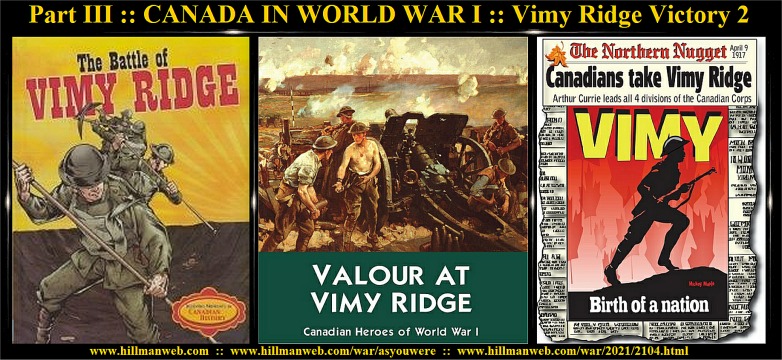


Preparation for battle
Vimy Ridge is located in northern France, about 175 kilometres north of Paris. It is a long, high hill that dominates the surrounding landscape. Germany captured Vimy Ridge early in the war and transformed it into a strong defensive position, with a complex system of tunnels and trenches manned by highly trained soldiers with many machine guns and artillery pieces. Previous Allied assaults on Vimy Ridge in 1914 and 1915 had resulted in hundreds of thousands of casualties but had been largely unsuccessful.
Rigorous training
The Canadians moved to the front lines across from Vimy Ridge in the late autumn of 1916. The Battle of Vimy Ridge would be the first time all four divisions of the Canadian Corps fought together as one formation. The planning and preparations for the battle were extensive. The Canadians spent the entire winter strengthening the lines, preparing for the assault on Vimy and training rigorously. Models of the trench systems were built and the soldiers drilled on what they were to do. They also raided German positions to gather intelligence on enemy defences.
Digging tunnels
Extensive "mining" operations were undertaken in which the Allies dug tunnels beneath the German lines and set large caches of explosives to be detonated when the time for the attack came. Elaborate tunnel systems with train tracks, piped water, lights, and huge underground bunkers to stockpile supplies and arms were also established to aid the Canadians in the battle.
A "Week of Suffering"
To soften enemy defences in preparation for the attack, the Allies made a massive and prolonged artillery barrage. The heaviest shelling was spread over a week to avoid tipping off the Germans on exactly when the assault would begin. More than a million shells rained down during what the Germans called the "Week of Suffering." The early military aircraft of the day also played a role in the battle by sweeping enemy aircraft and observation balloons from the skies.
Battle of Vimy Ridge Begins
The Battle of Vimy Ridge began at 5:30 a.m. on Easter Monday, April 9, 1917. The first wave of 15,000-20,000 Canadian soldiers, many heavily laden with equipment, attacked through the wind-driven snow and sleet into the face of deadly machine gun fire.
Vimy kite balloon
Though Vimy is rarely thought of as an aerial battle (back), some planes did take part in the fight, and kite balloons were an essential part of the operation's success.(Repairing a kite balloon which was slightly damaged on a gusty day. October 1916. Library and Archives Canada.)
Capturing German positions
The Canadians advanced behind a "creeping barrage." This precise line of intense Allied artillery fire moved ahead at a set rate and was timed to the minute. The Canadian infantrymen followed the line of explosions closely. This allowed them to capture German positions in the critical moments after the barrage moved on to the next targets but before the enemy soldiers could emerge from the safety of their underground bunkers.
Germans forced to withdraw
Canadian battalions in the first waves of the assault suffered great numbers of casualties, but the assault proceeded on schedule. Most of the heavily defended ridge was captured by noon. Hill 145, the main height on the ridge, was taken on the morning of April 10. Two days later, the Canadians took "the Pimple," as the other significant height on the ridge was nicknamed. The Germans were forced to withdraw three kilometres east and the Battle of Vimy Ridge was over. The Allies now commanded the heights overlooking the Douai Plain, which was still occupied by the enemy.
Vimy no man's land
The Canadian Corps, together with the British Corps to the south, had captured more ground, prisoners and artillery pieces than any previous British offensive of the war. Canadians would act with courage throughout the battle. Four of our soldiers would earn the Victoria Cross, the highest medal for military valour, for separate actions in which they captured enemy machine gun positions. They were: Private William Milne, Lance-Sergeant Ellis Sifton, Captain Thain MacDowell and Private John Pattison.
Sacrifice
The Battle of Vimy Ridge proved to be a great success, but it only came at a heavy cost. The some 100,000 Canadians who served there suffered more than 10,600 casualties, nearly 3,600 of which were fatal. By the end of the First World War, Canada, a country of less than eight million people, would see more than 650,000 men and women serve in uniform. The conflict took a huge toll with more than 66,000 Canadians losing their lives and over 170,000 being wounded.
Legacy
At Vimy Ridge, regiments from coast to coast saw action together in a distinctly Canadian triumph, helping create a new and stronger sense of national identity in our country. Canada's military achievements during the war raised our international stature and helped earn us a separate signature on the Treaty of Versailles that formally ended the war.
Canadian National Vimy Memorial
Today, on land granted to Canada for all time by a grateful France, the Canadian National Vimy Memorial sits atop Hill 145, rising above the now quiet countryside. This great monument is inscribed with the names of 11,285 Canadian soldiers who were listed as "missing, presumed dead" in France during the First World War. It stands as a tribute to all who served our country in the conflict and paid a price to help ensure the peace and freedom we enjoy today.
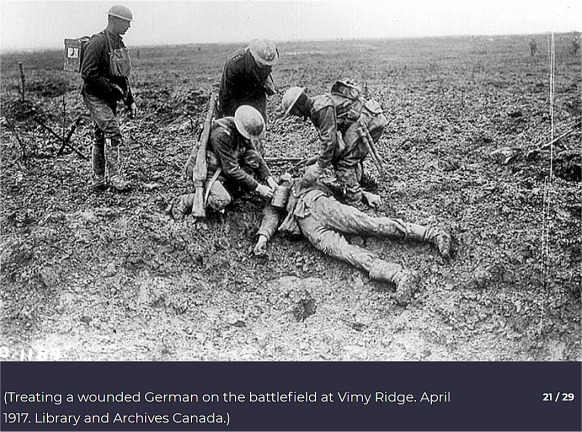
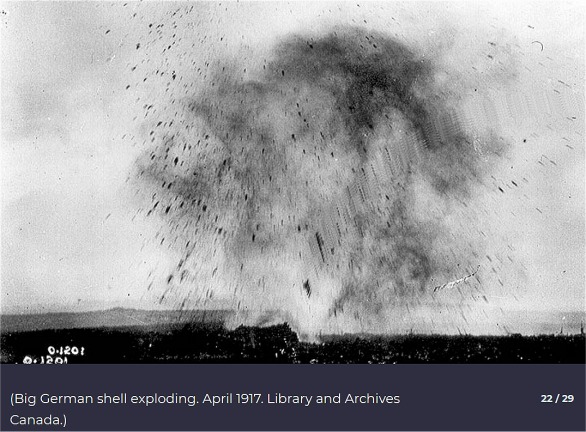
At 5:30 a.m., April 9, 1917, Easter Monday, the creeping artillery barrage began to move steadily toward the Germans. Behind it advanced 20,000 soldiers of the first attacking wave of the four Canadian divisions, a score of battalions in line abreast, leading the assault in a driving north-west wind that swept the mangled countryside with sleet and snow. Guided by paint-marked stakes, the leading infantry companies crossed the devastation of No Man's Land, picking their way through shell-holes and shattered trenches. They were heavily laden. Each soldier carried at least 32 kilograms of equipment, plus, some say, a similar weight of the all-pervasive mud on uniform and equipment. This burden made climbing in and out of the numerous trenches and craters particularly difficult. 
CANADA IN WWI
The Capture of Vimy RidgeThere was some hand-to-hand fighting, but the greatest resistance, and heavy Canadian losses, came from the strongly-emplaced machine-guns in the German intermediate line. Overcoming this resistance, three of the four divisions captured their part of the Ridge by midday, right on schedule. In the final stage, the 2nd Canadian Division was assisted by the British 13th Brigade, which fell under its command for the operation.
The 4th Canadian Division's principal objective was Hill 145, the highest and most important feature of the whole Ridge. Once taken, its summit would give the Canadians a commanding view of German rearward defences in the Douai Plain as well as those remaining on the Ridge itself.
Because of its importance, the Germans had fortified Hill 145 with well-wired trenches and a series of deep dug-outs beneath its rear slope. The brigades of the 4th Division were hampered by fire from the Pimple, the other prominent height, which inflicted costly losses on the advancing waves of infantry. Renewed attacks were mounted using troops that were originally scheduled to attack the Pimple. Finally, in the afternoon of April 10, a fresh assault by a relieving brigade cleared the summit of Hill 145 and thus placed the whole of Vimy Ridge in Canadian hands. Two days later, units of the 10th Canadian Brigade successfully stormed the Pimple. By that time, the enemy had accepted the loss of Vimy Ridge as permanent and had pulled back more than three kilometres.
Vimy Ridge marked the only significant success of the Allied spring offensive of 1917. But though they had won a great tactical victory, the Canadians were unable to exploit their success quickly with a breakthrough, mainly because their artillery had bogged down and was unable to move up with them through the muddy, shell-torn ground. Instead, some Canadian artillerymen took over captured German guns which they had earlier been trained to fire.
The Canadian achievement in capturing Vimy Ridge owed its success to sound and meticulous planning and thorough preparation, all of which was aimed at minimizing casualties. But it was the splendid fighting qualities and devotion to duty of Canadian officers and soldiers on the battlefield that were decisive. Most of them citizen-soldiers, they performed like professionals.
Canadians attacked German machine-guns, the greatest obstacles to their advance, with great courage. They saved many comrades' lives as a result. Four earned the Victoria Cross for their bravery in such dangerous exploits. Of these, three were earned on the opening day of the battle.
Private William Milne of the 16th Battalion earned the VC when he crawled up to a German machine-gun that had been firing on the advancing Canadians, bombed its crew and captured the gun. Later, he stalked a second machine-gun, killing its crew and capturing it, but was himself killed shortly thereafter. The whereabouts of Private Milne's grave is unknown.
Lance-Sergeant Ellis Sifton of the 18th Battalion charged a machine-gun post single-handed, leaping into the trench where it was concealed and killing its crew. Soon after, he was met by a small party of Germans who were advancing through the trench. He managed to hold them off until his comrades arrived, but then one of his victims, gasping a last breath of life, fired upon him.
During the fight for Hill 145, Captain Thain MacDowell of the 38th Battalion entered an enemy dug-out, where he tricked 77 Prussian Guards into surrendering and captured two machine-guns by pretending he had a large force behind him. His large force consisted of two soldiers. MacDowell had earned the Distinguished Service Order on the Somme.
On April 10, Private John Pattison of the 50th Battalion jumped from shell-hole to shell-hole until, 30 metres from an enemy machine-gun, he was in range to bomb its crew. He then rushed forward to bayonet the remaining five gunners. Pattison was killed two months later.
Of the four Vimy VCs, only Captain MacDowell survived the War.
At Vimy, the Canadian Corps had captured more ground, more prisoners and more guns than any previous British offensive in two-and-a-half years of war. It was one of the most complete and decisive engagements of the Great War and the greatest Allied victory up to that time. The Canadians had demonstrated they were one of the outstanding formations on the Western Front and masters of offensive warfare.
Though the victory at Vimy came swiftly, it did not come without cost. There were 3,598 dead out of 10,602 Canadian casualties. Battalions in the first waves of the assault suffered grievously. No level of casualties could ever be called acceptable, but those at Vimy were lower than the terrible norm of many major assaults on the Western Front. They were also far lighter than those of any previous offensive at the Ridge. Earlier French, British and German struggles there had cost at least 200,000 casualties. Care in planning by the Corps Commander, Sir Julian Byng, and his right-hand man, Arthur Currie, kept Canadian casualties down.
The Canadian success at Vimy marked a profound turning-point for the Allies. A year-and-a-half later, the Great War was over. The Canadian record, crowned by the achievements at Vimy, earned for Canada a separate signature on the Versailles Peace Treaty ending the war. Back home, the victory at Vimy, won by troops from every part of the country, helped unite many Canadians in pride at the courage of their citizen-soldiers, and established a feeling of real nationhood.
Brigadier-General Alexander Ross had commanded the 28th (North-West) Battalion at Vimy. Later, as president of the Canadian Legion, he proposed the first Veterans' post-war pilgrimage to the new Vimy Memorial in 1936. He said of the battle:
"It was Canada from the Atlantic to the Pacific on parade. I thought then... that in those few minutes I witnessed the birth of a nation."
~ Reference: www.veterans.gc.ca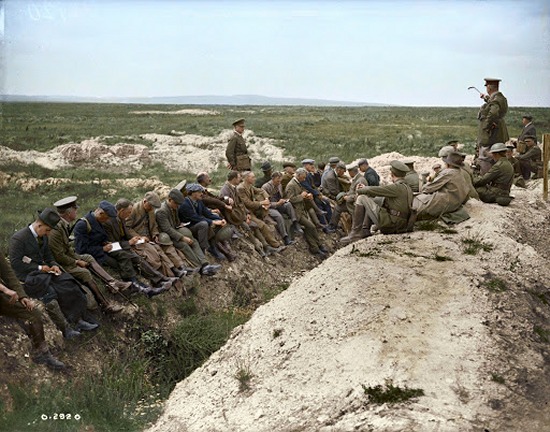
Gen. Currie telling now Vimy Ridge was taken.
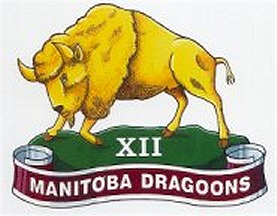
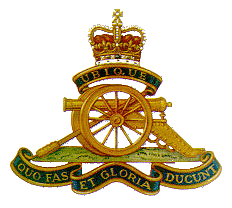
|
ANNUAL VIMY and BEYOND FUNDRAISER A Major Success Each Year! 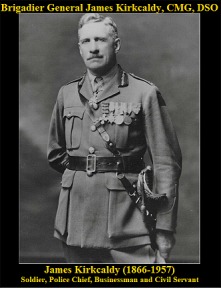
View the Museum's James Kirkcaldy Tribute: www.12mbdragoons.com/news/2018/VIMY.html Alternate PowerPoint Presentation www.12mbdragoons.com/news/2018/VIMY AND BEYOND.pptx |
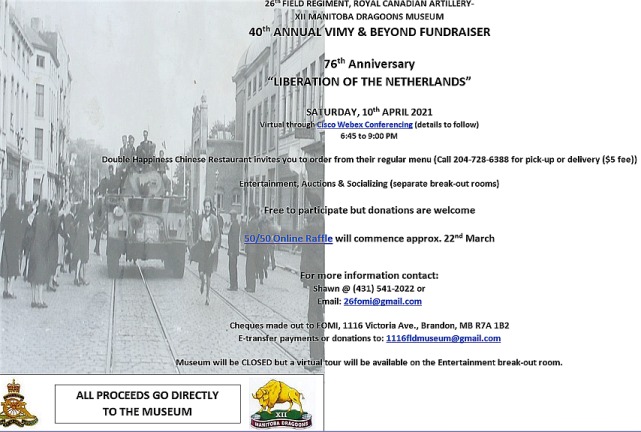
![]()
CANADA IN WWI :: THE BATTLE OF VIMY RIDGE
A MAJOR CANADIAN VICTORY

|
|
|
|
|
|
|
As You Were . . . Tribute Webzines |
Hillman WWII Tributes www.hillmanweb.com/war |
www.hillmanweb.com/rcaf RCN HMCS PRINCE ROBERT www.hillmanweb.com/rcn |
Ex-Air Gunners Association Magazines |
![]()
![]()
![]()
Photos and Web Design by Bill Hillman
Volunteer
Editor and Webmaster: William G. Hillman
hillmans@westman.wave.ca
Copyright 2021